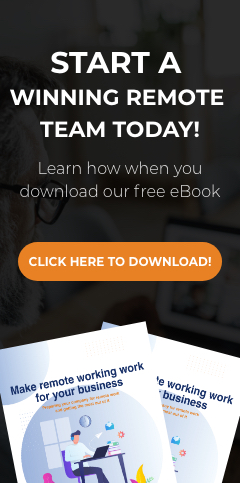
Integrating internal communication tools such as Unified Communications-as-a-Service (UCaaS) with customer-facing systems like Contact Center-as-a-Service (CCaaS) is rapidly gaining traction among businesses. This blog explores the key advantages of UCaaS-CCaaS integration for businesses and provides a guide to help companies successfully implement it.
Why combining UCaaS and CCaaS makes sense
Think about all the ways your business communicates: desk phones, mobile devices, video calls, team chats, emails, and social media messages. Too often, the tools your team uses to communicate internally (i.e., UCaaS) are completely separate from the tools used to engage with customers (i.e., CCaaS). Such disconnect leads to:
- Lost productivity: Employees waste time searching for information and switching between multiple platforms just to resolve a single customer issue.
- Inconsistent customer experiences: Customers are often frustrated by having to repeat themselves because the person assisting them doesn’t have a complete view of past interactions.
- Higher costs: Paying for multiple, disconnected software subscriptions drives up expenses and complicates your budgeting process.
Integrating UCaaS and CCaaS systems bridges the gap between your internal teams and customers, creating a smoother, more efficient communication flow. This unified approach enhances collaboration, increases productivity, and ensures a more professional customer experience. It also allows your team to work from anywhere, on any device.
A 3-step guide to UCaaS and CCaaS convergence
Streamline your communication systems with these three simple steps:
Step 1: Assess your current tools
Identify the communication tools your business relies on by asking the questions:
- Which tools are effective, and which ones cause frustration?
- Are there communication gaps between your teams (e.g., sales, support, field workers)?
- Is your communication data centralized or scattered across multiple apps?
Compile a list of challenges you aim to address, which will help guide your search for a unified communication solution.
Step 2: Choose a truly all-in-one solution
The real value of UCaaS and CCaaS convergence lies in complete integration. It’s more than just linking phones and chat tools; it’s about building a unified ecosystem where everything works together effortlessly.
When choosing a platform, prioritize one that integrates with:
- Customer relationship management systems
- Productivity tools (e.g., Microsoft 365, Google Workspace)
- Marketing tools
With everything in one place, your business gains a centralized command center that enables easier scalability, faster AI adoption, and smoother workflow automation.
Step 3: Partner with the right provider
Look for a partner who understands your specific challenges and tailors their solution to meet your goals. Other key qualities to consider include:
- Compatibility: The integrated communication solution should work with the devices and software you already use.
- True mobile support: Your team should have seamless access to the integrated UCaaS-CCaaS system, whether they’re at their desk or on their smartphone.
- User-friendly platform: The system should be intuitive and easy for employees to manage.
- Scalability: The solution should be able to grow with your business, allowing you to add new features or users as your needs evolve.
- Expert support: A great IT partner doesn’t just sell you software; they provide training, guidance, and ongoing support to help you get the most from your investment.
Ready to simplify your business communication tools? Contact our IT experts to discover how UCaaS-CCaaS integration and other IT solutions can help your business thrive.


